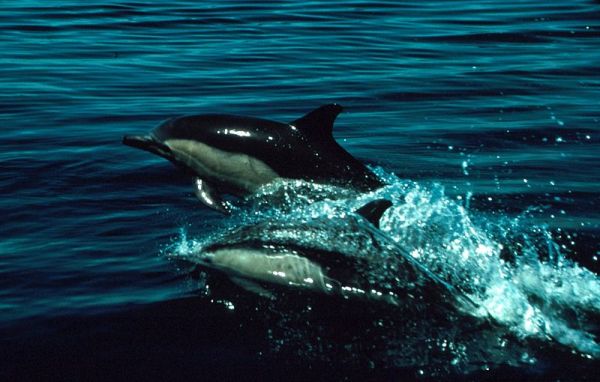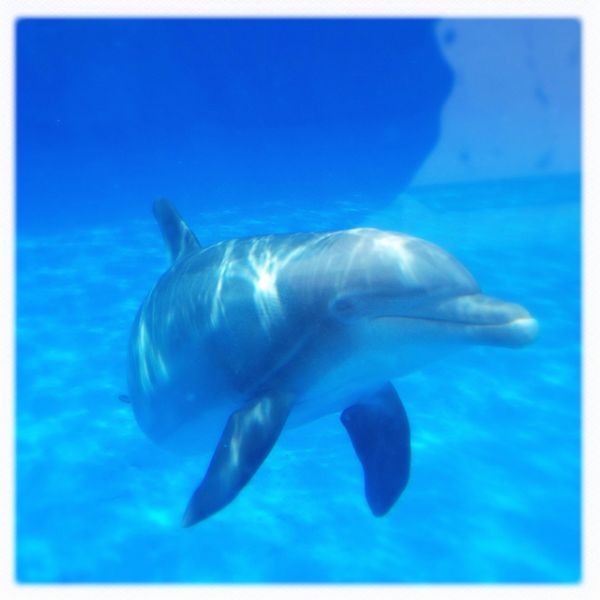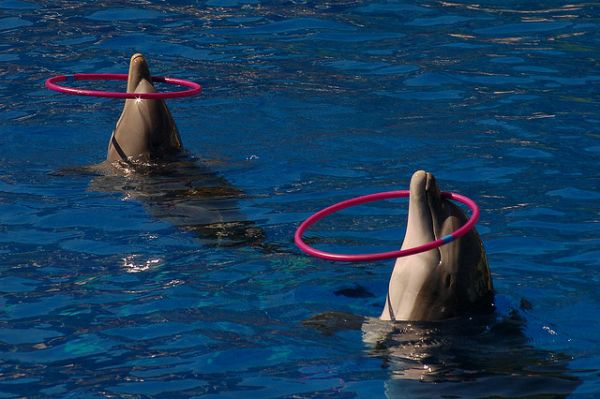ANIMAL MAGNETISM
Few other
animals evoke such mystery and curiosity as the dolphin. The more we
study them, the more we want to know about them. We know that dolphins
live 30 to 40 years. They have a distinct social structure, traveling in
flexible groups of between 6 and 12 called pods. Young
dolphins stay with their mothers for three years or longer before moving
on to a new pod. Yet, remarkably, a daughter will often return to her
mother’s group to have her first calf. A dolphin’s cerebral cortex -the portion of the brain that plans, thinks, and imagines- is larger than a human’s and, indeed, dolphins are adept at planning, thinking, and imagining. According to professional trainers, there is no limit to what a dolphin can learn.
* Dolphins learn quickly. Two dolphins at Sea Life Park in Hawaii knew entirely different routines. One day the trainer accidentally switched the two dolphins and didn’t know why they seemed so nervous about performing the stunts. One dolphin, trained to jump through a hoop 12 feet in the air, refused to jump at all until she lowered it to 6 feet. The other seemed shaky about navigating through an underwater maze while blindfolded. Not until the show was over did the trainer discover the error. The dolphin who had jumped through the 6-foot-high hoop had not been trained to go through a hoop at all. The other dolphin was familiar with the blindfold but had never navigated the underwater maze. Yet, somehow, each had figured out how to perform the other’s tricks before the end of the routine.
* Dolphins can learn sign language. They can understand syntax and sentence structure, knowing the difference between “Pipe fetch surfboard” (“Fetch the pipe and take it to the surfboard”) and “Surfboard fetch pipe” (“Fetch the surfboard and take it to the pipe”). When asked, “Is there a ball in the pool?” the dolphin is able to indicate yes or no -meaning it has understood the language, formed a mental image of the object referred to, and deduced whether the object is or is not there. This is called referential reporting and is otherwise only documented in apes and humans.
* Dolphins consistently demonstrate imagination and creativity. At the Kewalo Basin Marine Mammal Lab in Hawaii, two young trainers were working with a pair of bottle nose dolphins named Akeakemai and Phoenix. The trainers got the dolphin’s attentions and then, together, they tapped two fingers of each hand together, making the symbol for “in tandem.” They both threw their arms in the air, the sign language gesture that means “creative.”




No comments:
Post a Comment